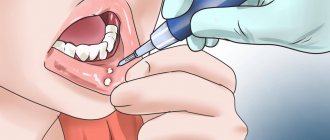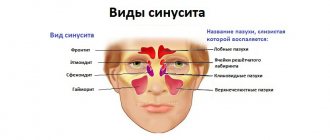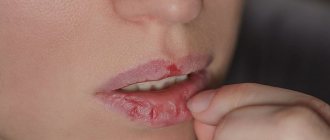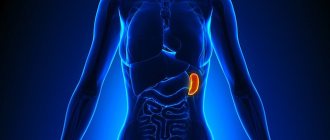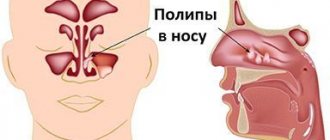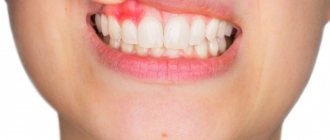Diseases of the oral mucosa very often manifest themselves as inflammation, and in this sense they are everyday synonyms for inflammation of the oral mucosa. If the inflammation covers the entire oral mucosa, then the general term “stomatitis” is usually used. But with pronounced localization, there are additional terms: gingivitis and gingivostomatitis (for gums), cheilitis (for localization on the lips), glossitis (for localization on the tongue) and other designations. Moreover, often these localized stomatitis are quite reasonably considered as separate diseases and, as a result, as specific inflammations of the oral mucosa.
Inflammation of the oral mucosa can be an independent disease (diseases of the oral mucosa) or a consequence and symptom of other pathologies. In this case, inflammation of the oral cavity can be chronic or acute.
Preventive measures
To keep your gums healthy, you need to follow the following rules:
- brush your teeth regularly and do it correctly;
- eat a balanced diet;
- promptly treat existing malocclusions;
- undergo preventive examinations at the dentist annually;
- Do professional dental hygiene once a year.
It is also important to quit smoking. Tobacco smoke constricts blood vessels, causing poor blood supply to the gums.
Content:
- The most common gum diseases
- Why gum disease occurs
- How diseases manifest themselves
- Treatment
- Preventive measures
4.1. Oral hygiene 4.2. Physiotherapy 4.3. Anti-inflammatory drugs 4.4. Curettage 4.5. Surgery
Worried about the whiteness of their teeth and the aesthetics of their smile, people often forget about the health of their gums. Meanwhile, among other dental diseases, their pathologies provide significant competition to caries. Moreover, premature loosening and loss of incisors and molars is very often associated with infection of the apparatus that holds them.
Types of pathologies
In accordance with the ICD-10 classification for dentistry, treatment of diseases of the oral mucosa is carried out in four categories. There are inflammatory, infectious, viral and fungal diseases. The treatment plan depends both on the severity of negative symptoms and on the individual characteristics of the patient’s body, which are manifested, among other things, in the reaction to certain groups of medications.
Infectious viral processes
The form of development is directly related to the source of occurrence - thus, the following varieties are characteristic of pathological cycles provoked by a viral infection:
- Catarrhal is a condition characterized by severe swelling and rashes, on the surface of which a gray coating forms.
- Aphthous - damage to the oral mucosa, associated with the formation of painful blisters, leaving behind areas of erosion.
- Ulcerative – similar in symptoms to the first option, but differs in a more pronounced pain syndrome.
Let's consider the main diseases classified as infectious.
Pharyngitis
An inflammatory process affecting the pharynx area, caused both by the introduction of the pneumococcal virus and by systematic inhalation of smoke, polluted or cold air. It is accompanied by discomfort when swallowing, increased sensitivity and a persistent feeling of tickling, as well as general malaise and fever. Diagnosed by visual examination and by examining a smear sample. In difficult cases, it is treated with antibiotics, but in most situations a therapeutic course, including regular inhalations, rinses and compresses, is sufficient.
Glossitis
A disease of the mucous surface of the tongue, leading to a change in its structure and shade. The likelihood of infection increases with the systematic consumption of hot or alcoholic drinks and spicy food, non-compliance with hygiene standards, as well as burns and mechanical damage to tissues. Primary symptoms are characterized by discomfort and a burning sensation. As the pathology develops, areas of redness form, the intensity of salivation increases, and taste perception worsens.
Prolonged absence of medical intervention leads to extensive swelling, which makes it difficult to perform normal functions, as well as to the formation of growths. The drug course of treatment for glossitis involves a special dietary regimen that excludes solid foods from the diet.
Gingivitis
An inflammatory disease of the gum mucosa, most often diagnosed in adolescence, as well as in pregnant patients. Various forms of manifestation determine the presence of an additional classification:
- Ulcerative-necrotic - affects the tissues of the oral cavity, provokes enlargement of the lymph nodes and is characterized by severe pain.
- Catarrhal and atrophic - cause swelling, itching, bleeding, an acute reaction to temperature changes, as well as weakening of the structure.
- Hypertrophic – manifested by a noticeable increase in the size of the gingival papillae, accompanied by bleeding and pain.
The timing of treatment for gingivitis depends on the stage at which the pathology is detected. The dentist’s priority task is to remove plaque and relieve inflammatory processes.
Stomatitis
Infection is introduced in different ways, most often as a result of mechanical damage to tissue. As it develops, characteristic round ulcers are formed, localized on the inside of the lips and cheeks, as well as in the area of the root of the tongue.
When diagnosing, it is recommended to treat the oral mucosa, having previously excluded products containing sodium lauryl sulfate from everyday use, since the active component provokes additional irritation. Anesthetics help relieve pain, and antiseptic and anti-inflammatory compounds are used to remove the film.
Features of the oral mucosa
Negative environmental factors (temperature, mechanical, infectious, and others) most often primarily attack the oral cavity of the human body. And the first barrier to negative factors is usually the mucous membrane covering the oral cavity.
The mucous membrane in the oral cavity has a multilayer structure, but in a simplified form it can be represented as an outer layer of squamous epithelium, the mucous membrane itself (connective tissue), the submucosal layer, with all layers located on the muscular layer. The mucous membrane itself, in the form of papillae, is embedded in waves (villi) into the epithelial layer. The ratio of layers is different for different parts of the oral cavity. Each layer has its own characteristics and properties, and contains, in addition to the main substance, many additional elements. For example, the epithelial layer facing directly into the oral cavity can peel off, become keratinized, but quickly recover. The mucous membrane itself contains diverse elements of immune defense (macrophages, mast cells - carriers of biologically active substances that are potential mediators of inflammation, plasma cells, etc.). The layers of the mucosa are saturated with capillary and lymphatic vessels, nerve fibers and plexuses.
The result of this special organization of the membrane is its unique properties (compared to the properties of other mucous membranes of the human body): resistance to physical and chemical irritants, resistance to infection (and to inflammation of the oral cavity ), high restorative ability (regeneration).
Treatment
Gum disease should be treated under the supervision of a dentist. Good results can be achieved using techniques such as:
- professional hygiene;
- physical therapy;
- taking anti-inflammatory drugs;
- curettage;
- surgery.
Let's look at each of them in more detail.
Oral hygiene
This procedure is many times more effective than regular home teeth cleaning. Using an ultrasonic scaler, the dentist removes soft and hard deposits. As a result, the enamel becomes perfectly clean, the gums become healthier, and begin to fit more tightly to the teeth.
This treatment is sufficient if the disease has just begun to develop. Ideally, you need to undergo hygienic cleaning every year. Then the risk of periodontitis will be several times lower.
Physiotherapy
Indicated for chronic gum disease. It is not used for acute pathologies. It can act as a primary or additional method of therapy for periodontal disease. The most popular physical therapy options:
Electrophoresis. Special medicinal compounds are injected into periodontal tissue using direct current. The technique allows you to deliver important components directly to the changed areas of the oral cavity, due to which the therapeutic effect is noted after the first session. Electrophoresis perfectly fights advanced periodontitis. With its help you can remove swelling, inflammation, itching, and significantly reduce bleeding.- Massage. It can be done with your fingers or using a special vacuum apparatus. The effect on tissue increases blood supply, disperses lymph, and normalizes metabolism. With one massage it is impossible to stop all the symptoms of periodontitis and periodontal disease, but it is possible to alleviate the course of the disease.
- Vacuum treatment. Provides for the use of special alluvial installations. They artificially tear the surface capillaries, resulting in small hematomas. During the resorption of the latter, local immunity increases. The newly formed blood vessels are denser and more elastic than their predecessors. As a result, local blood flow is normalized, the atrophy process becomes barely pronounced or disappears completely.
- Darsonval. Indicated in the presence of periodontal cavities filled with purulent contents. They are treated with weak high-frequency currents, which reduces sensitivity and improves local blood supply.
Anti-inflammatory drugs
Typically, patients take anti-inflammatory drugs in parallel with physiotherapy after professional hygiene. This treatment is complex and therefore turns out to be the most effective.
Medicines can be applied to the inflamed area in the form of gels, ointments, solutions, or taken orally. It is important not to use them without a doctor's prescription.
Curettage
The need for it arises if periodontal pockets are visualized. If their depth is up to 5 mm, the procedure is performed under local anesthesia. In this case, no incision is made. If the disease is severely advanced, dissection of the inflamed gum is performed to gain access to the altered root and thoroughly clean it of hard deposits.
With the help of curettage, you can significantly reduce large periodontal gaps and completely get rid of small ones. Subsequently, to maintain a satisfactory condition of the gums, it is enough for the patient to remove the stone once or twice a year with an ultrasonic scaler or laser.
Surgery
It is used only if all the methods described above are ineffective. Then the patient is given a referral to a maxillofacial surgeon so that he can decide how to treat the disease further.
In advanced cases, surgery may be required to replace the affected areas with an artificial implant. A special membrane can also be installed between the jaw bone and gums, which accelerates regeneration and promotes natural bone growth. Flap operations are often used in surgical practice. They resemble curettage, but involve deeper penetration.
It is important to understand that surgical treatment is a last resort. It is used only if inflammation develops rapidly and cannot be stopped or at least slowed down.
